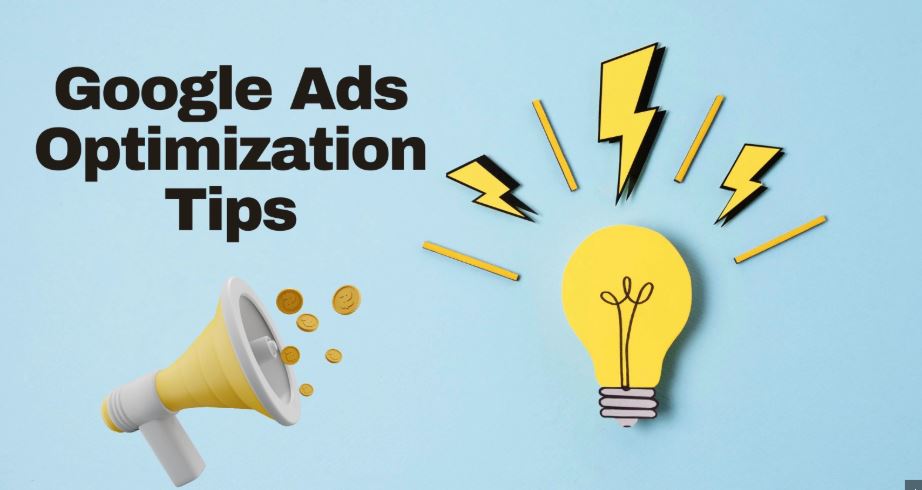If you’ve been running Google Ads and you’re not getting the results you want, you’re not alone. Many advertisers struggle with wasted budget, low click-through rates, and disappointing conversions.
This beginner-friendly blog post will walk you through the top Google Ads optimisation tips you can use to boost conversions quickly.
Why Google Ads Optimisation Matters
It’s easy to launch an ad campaign. But launching a campaign that brings conversions at a low cost—that’s the real challenge.
Without optimisation, you’ll face:
- High cost per click
- Low-quality leads
- Wasted ad spend
- Poorly targeted traffic
- Low conversion rates
Google Ads optimisation helps you:
- Reach the right audience.
- Reduce wasted budget.
- Improve conversion rates.
- Increase ad relevance.
- Lower your cost per acquisition.
- Boost overall ROI.
In short, optimisation makes your ads smarter and more profitable.
1. Use Highly Targeted Keywords (Focus on Intent)
Not all keywords are equal. Some attract window shoppers, while others attract buyers. Your job is to target keywords that show buying intent.
Categories of keywords to prioritise:
Transactional keywords
These show the user wants to buy now.
Examples:
- “Buy running shoes online.”
- “Hire a digital marketing agency.”
- “Best laptop deals today”
Commercial keywords
These show the user is comparing options.
Examples:
- “Best budget laptops 2025”
- “Top insurance companies near me”
- “Affordable SEO tools”
These keywords bring users who are closer to making a decision.
Avoid broad, vague keywords.
Examples:
- “Laptops”
- “Shoes”
- “Insurance”
These bring too many unqualified clicks.
Tip:
Use keyword match types wisely—phrase match and exact match help you filter out irrelevant searches and boost conversion quality.
2. Improve Your Quality Score to Reduce Costs
Your Quality Score is Google’s rating of your ad, keyword, and landing page relevance. A high score lowers your cost per click and improves your ad position.
Quality Score is influenced by:
- Expected click-through rate
- Ad relevance
- Landing page experience
How to improve it:
- Add your main keyword to your ad headline.
- Match your ad text with keyword intent.
- Use fast-loading, mobile-optimised landing pages.
- Improve ad copy to increase clicks.
- Remove irrelevant keywords.
- Add negative keywords.
A strong Quality Score means you can outrank competitors—even if they spend more.
3. Write High-Converting Ad Copy (Speak to the User’s Pain Point)
The right ad copy grabs attention instantly and gives people a reason to click.
Your ad must:
✔ Address a problem
✔ Offer a clear solution
✔ Highlight a benefit
✔ Create urgency
✔ Include your keyword
Example of weak ad copy:
“Buy Shoes at Best Prices.”
Example of strong ad copy:
“Need Affordable Running Shoes? Get Lightweight, Durable Pairs Delivered Fast.”
See the difference?
One is generic. The other solves a problem.
Tips for better ad copy:
- Use power words: “fast”, “free”, “affordable”, and “guaranteed”.
- Add social proof: “Trusted by 10,000+ customers.”
- Create urgency: “Limited stock left”
- Use emotional triggers: “Finally Get the Comfort You Deserve”
The more relatable your ad, the more users click—and convert.
4. Use Negative Keywords to Stop Wasting Money
Negative keywords prevent your ads from showing up for irrelevant searches. This saves a lot of money and improves conversion quality.
Example:
If you sell premium software, add negative keywords like:
- free
- cheap
- discount
- trial hacks
If you sell paid online courses, add:
- free courses
- YouTube lessons
- tutorials for free
Negative keywords are your budget protector.
5. Optimise Your Landing Pages for Conversions
A great ad means nothing if your landing page doesn’t convert. Your page should feel like a natural extension of the ad.
A high-converting landing page includes:
- A strong headline
- A clear value proposition
- One primary call to action
- Fast load time
- Short and simple forms
- High-quality visuals
- Social proof (reviews, testimonials, ratings)
- Trust badges
- Clear benefit statements
Avoid clutter.
Avoid distractions.
Avoid long paragraphs.
Your message should be simple:
Here’s what we offer. Here’s why it helps you. Here’s how to get it.
6. Use Ad Extensions to Increase CTR Instantly
Ad extensions boost visibility, credibility, and click-through rate. They allow you to show more information without paying extra.
Useful ad extensions include:
- Sitelink Extensions (extra links to key pages)
- Callout Extensions (“Free Shipping”, “24/7 Support”)
- Structured Snippet Extensions (features or services list)
- Call Extensions (phone number)
- Location Extensions (physical address)
- Price Extensions (pricing details)
Ads with extensions get higher CTR because they take more space and give more details.
7. Use Smart Bidding Strategies for Faster Conversions
Google’s automated bidding strategies help optimise your campaigns based on your goals.
Best smart bidding options for conversions:
- Target CPA (Cost per Acquisition)
Google adjusts bids to get you leads at your target cost. - Target ROAS (Return on Ad Spend)
Best for eCommerce where revenue tracking matters. - Maximise Conversions
Google focuses on generating as many conversions as possible. - Maximise Conversion Value
Useful when some conversions are worth more than others.
Start with Maximise Conversions. If you’re a beginner, then switch to Target CPA for tighter control.
8. Use Audience Targeting for Higher Precision
Keywords alone are not enough. Combine them with audiences to refine your targeting.
Types of audiences to use:
- In-Market Audiences (people ready to buy soon)
- Custom Intent Audiences (people searching for specific topics)
- Affinity Audiences (users with long-term interests)
- Remarketing Audiences (past visitors)
- Customer Match Audiences (upload customer list)
When you combine intent and behaviour, conversions skyrocket.
9. Create Multiple Ad Variations (A/B Testing)
Never rely on one ad. You should test differently:
- headlines
- descriptions
- CTAs
- landing pages
- offers
- images (display ads)
- keyword match types
Testing helps you discover what brings the best conversions.
A/B test ideas:
- “Buy Now” vs. “Get Started”
- “30% Off Today” vs. “Limited Offer”
- Short copy vs. longer emotional copy
Always let each variation run long enough to gather meaningful data.
10. Use Remarketing to Bring Back Interested Visitors
Remarketing ads target people who already visited your site but didn’t convert. This group is far more likely to buy than new visitors.
Remarketing is powerful because:
- Users are already familiar with you.
- You’re reminding them of what they almost bought.
- You can offer limited-time discounts.
- You can show product demos, reviews, or benefits.
Examples of remarketing ads:
- “Still thinking about this? Complete your purchase now!”
- “Get 10% off your abandoned cart.”
- “You viewed our service—book a free consultation.”
Remarketing typically brings the highest ROI of all Google Ads campaigns.
11. Optimise Your Budget Allocation
Not all campaigns deserve the same budget. Optimise your spending by evaluating:
- highest converting keywords
- lowest cost per conversion
- best-performing ads
- top-performing audiences
Shift more budget to winning segments and cut off underperforming ones.
Rule of thumb:
Invest where returns are highest.
12. Improve Your Ad Relevance
Google rewards relevance. The closer your ad matches the user’s intent, the higher your ad rank.
Improve relevance by:
- Including the exact keyword in the headline
- Using the keyword in the description
- Using landing page content related to the keyword
- Avoiding generic messaging
When relevance increases, costs drop.
13. Analyse Search Terms Report Regularly
Your Search Terms Report shows what people actually typed before clicking your ad.
Use it for:
- discovering new profitable keywords
- finding irrelevant searches to add as negative keywords
- improving your ad copy
- optimising match types
If you ignore this report, you’ll waste money.
14. Use Geo-Targeting to Reach the Right Locations
Not every location converts the same. Some cities or regions bring better leads.
Optimise by:
- excluding low-performing cities
- focusing on high-income areas
- targeting areas closer to your business
- using radius targeting
- setting bid adjustments for top locations
Geo-targeting helps you reduce wasted spending and attract quality customers.
15. Optimise for Mobile Users
More than half of Google Ads clicks come from mobile devices. Your landing pages must load fast and look great on small screens.
Mobile optimisation checklist:
- Compress images.
- Use shorter headlines.
- Use larger buttons.
- Keep forms minimal.
- Avoid heavy scripts.
Poor mobile experience = lost conversions.
16. Add Social Proof to Your Ads and Landing Pages
People trust what others say. Adding social proof increases conversions dramatically.
Best social proof types:
- Reviews
- Customer ratings
- Case studies
- Testimonials
- “5,000+ users trust us” badges
Use them on your landing pages and ad extensions.
17. Offer Strong Incentives
Sometimes users need a push.
Examples of strong incentives:
- discount
- bonus offer
- free shipping
- free trial
- limited-time deal
- coupon code
- free consultation
Incentives increase urgency and boost conversions instantly.
18. Track Conversions Properly
You can’t optimise what you don’t track. Install:
- Google Ads conversion tracking
- Google Analytics 4
- Enhanced conversions
- Call tracking (if needed)
Without proper tracking, your optimisation efforts are blind.
19. Use Responsive Search Ads
Responsive Search Ads allow Google to mix different headlines and descriptions to find the best combination.
This improves:
- ad relevance
- Quality Score
- click-through rate
- conversions
Create at least 10 headlines and 4 descriptions for best results.
20. Monitor and Optimise Regularly
Google Ads is not a “set and forget” platform. You must review your data at least weekly.
Focus on:
- lowering cost per conversion
- improving CTR
- removing poor keywords
- boosting high-performing ads
- optimising bids
- refining audiences
- improving landing pages
Consistent optimisation is the secret to high-converting Google Ads.
Conclusion
Google Ads works—if you know how to optimise your campaigns the right way. With the tips in this guide, you can boost conversions fast, cut wasted spending, and get more value from every dollar you invest.
When you approach Google Ads with strategy and consistency, the results can be game-changing for your business.










